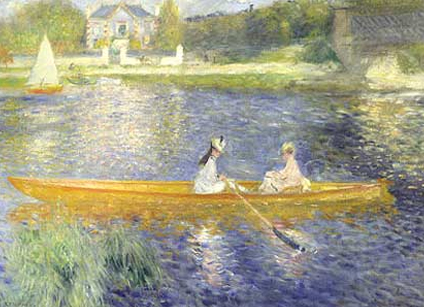The National Gallery's new exhibition, ''Impressionism: Art in the Making'', pays tribute to some of the unsung giants of nineteenth-century painting: Guyton de Morveau; CW Scheele; LJ Thenard. Although none of them ever put paintbrush to canvas, these are the men who paved the way for the art of Monet, Renoir, Pissarro and Cezanne.
Look at the blue shadows in Monet's Lavacourt under Snow, or the radiance of the water in Renoir's Boating on the Seine. Only the Impressionists, it is often said, could paint things seen this freshly, this spontaneously. But they had help - and that's where Messrs de Morveau, Scheele, Thenard come in. Look at that blue again. There is nothing like it in earlier painting, for the simple reason that it had not been invented. In the mid-nineteenth century, L J Thenard's research into the chemistry of cobalt revealed the possibility that an artist's pigment might be derived from the metal. Cobalt oxide was calcinated with alumina to form the binary oxide cobalt aluminate, known to artists as cobalt blue - and the Impressionist riverbank idyll, vivid sky reflected in sparkling water, was born.
Cobalt blue is a pure blue, lacking the greenish undertone of previous artists' blues like azurite, Prussian blue and indigo, and it is far less expensive than the natural ultramarine, extracted from the semi-precious stone lapis lazuli, used by artists in earlier centuries. What Thenard did for blues, de Morveau did for whites and Scheele did for greens. The new range of artists' colours made available by nineteenth-century ad-vances in the field of chemistry played a crucial role in the development of Impressionist art.
The new colours also account, at least in part, for the immense popularity of Impressionist art today. Despite the fact that Impressionist paintings routinely command sums on a...


